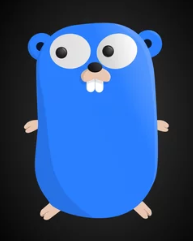Supercharge Your PowerPoint Presentations with Golang Templates
 unidoclib
unidoclib
Creating professional PowerPoint presentations manually can be a tedious and time-consuming process, especially when dealing with repetitive content or large datasets. Whether you’re preparing business reports, sales presentations, or training materials, automating slide generation can significantly enhance efficiency.
With Golang, you can streamline this process by leveraging templates to dynamically generate PowerPoint slides. One of the most effective ways to do this is by using UniOffice, a powerful Go library designed for handling Microsoft Office files, including PowerPoint. By integrating Golang templates with UniOffice, you can automate content updates, maintain design consistency, and generate professional presentations at scale.
In this guide, we’ll explore how Golang templates can transform your PowerPoint workflow, helping you create data-driven, customized slides effortlessly.
Why Automate PowerPoint Generation?
Automating PowerPoint presentations with Golang offers several advantages:
Time Efficiency – No more manually editing slides for each new dataset or report.
Consistency – Ensure all presentations follow the same branding, format, and structure.
Dynamic Content – Easily update slides with the latest data, charts, and reports.
Scalability – Generate multiple presentations automatically, ideal for businesses handling reports for different clients or departments.
By using Golang templates, you can automate text content, tables, images, and even slide layouts, making PowerPoint generation seamless.
How Golang Templates Work for PowerPoint
Golang’s built-in text/template and html/template packages allow developers to create reusable templates where dynamic values can be inserted into predefined placeholders. While these are commonly used for web pages and reports, they can also be applied to PowerPoint slide generation.
Key Benefits of Using Templates for PowerPoint
Separation of Content & Design – Keep your slide layouts fixed while dynamically changing text and images.
Easy Updates – Modify content without restructuring the entire PowerPoint file.
Reduced Errors – Automate repetitive tasks to minimize manual mistakes.
To integrate templates into PowerPoint files, developers typically use Go libraries that allow interaction with .pptx files. While Go does not have built-in PowerPoint handling, third-party libraries like "github.com/unioffice/unioffice" can be used for creating, editing, and modifying slides programmatically.
Best Practices for Creating PowerPoint Templates in Go
To get the most out of Golang templates for PowerPoint presentations, follow these best practices:
1. Define a Standardized Slide Structure
Before automating, ensure your PowerPoint presentation has a consistent template with placeholders for:
Title and Subtitles
Bullet Points
Tables and Charts
Images and Icons
This allows dynamic content to be injected while maintaining design consistency.
2. Use Golang Templates for Dynamic Content
Utilize Go’s templating syntax ({{ .VariableName }}) to insert data dynamically into slides. This allows customization without modifying the entire PowerPoint manually.
3. Automate Data Insertion from External Sources
PowerPoint slides often contain business insights and analytics. You can automate data population by fetching information from:
Databases (e.g., PostgreSQL, MySQL)
APIs (e.g., financial market data, customer insights)
CSV or JSON files for structured reporting
4. Generate Multiple Presentations at Scale
If your organization produces presentations for multiple clients or stakeholders, automation allows batch generation of personalized PowerPoint files with minimal effort.
5. Optimize Performance for Large Slide Decks
When generating large presentations dynamically:
Use caching to avoid redundant processing.
Limit image sizes to prevent bloated PowerPoint files.
Keep templates modular to allow easy updates.
Real-World Use Cases for Automating PowerPoint with Golang
1. Business Reports & Dashboards
Companies that generate weekly or monthly business reports can automate PowerPoint slide creation using Golang, ensuring data-driven insights are presented accurately.
2. Sales Presentations
Sales teams can create personalized pitch decks for different clients, dynamically inserting relevant case studies, pricing, and client-specific data.
3. Educational & Training Materials
Educational institutions and e-learning platforms can generate customized lecture slides based on predefined templates, pulling content from structured databases.
4. Financial & Market Analysis Reports
Investment firms and analysts can automate financial presentations with live market data, ensuring up-to-date figures in every PowerPoint slide.
For an in-depth guide on working with PowerPoint templates in Go, check out resources on automating PowerPoint generation with UniOffice or similar libraries.
Final Thoughts
Automating PowerPoint presentation creation with Golang saves time, improves consistency, and enhances scalability. Whether you’re generating business reports, sales presentations, or training materials, using Golang templates allows you to focus on insights rather than manual slide formatting.
By leveraging Go’s templating system and integrating it with PowerPoint handling libraries, developers can create dynamic, professional presentations with ease.
Have you explored automating PowerPoint presentations in Golang? Share your experiences and thoughts in the comments!
Subscribe to my newsletter
Read articles from unidoclib directly inside your inbox. Subscribe to the newsletter, and don't miss out.
Written by

unidoclib
unidoclib
Welcome to our Hashnode profile, where we share our expertise in PDF and office document generation and manipulation in Golang. As a company dedicated to creating and publishing content in this domain, we are passionate about utilizing the power of Golang to streamline document handling and enhance user experiences. Our blogs and articles aim to simplify the complexities of PDF and office document manipulation, making them accessible and beneficial for our audience. Whether you're a developer seeking to integrate powerful document generation capabilities into your projects or an enthusiast interested in learning more about Golang's potential, we've got you covered. Join us on this exciting journey as we explore the advanced features of the Golang PDF library, uncovering its hidden gems to create stunning and functional documents effortlessly. From rendering text and images to seamless page manipulation and implementing advanced features like watermarking and digital signatures, we cover various topics to cater to multiple interests. As an organization that values collaboration and growth, we encourage you to connect with us and share your thoughts, ideas, and questions. Let's foster a vibrant community where we can learn from one another and push the boundaries of document handling in Golang. Stay tuned for regular updates as we continue to provide valuable insights, tips, and practical examples, empowering you to harness the full potential of Golang for efficient document generation and manipulation. Thank you for being a part of our journey, and we look forward to embarking on this exciting adventure together!